Letter: Stop Slowly Killing Trees

Audio By Carbonatix
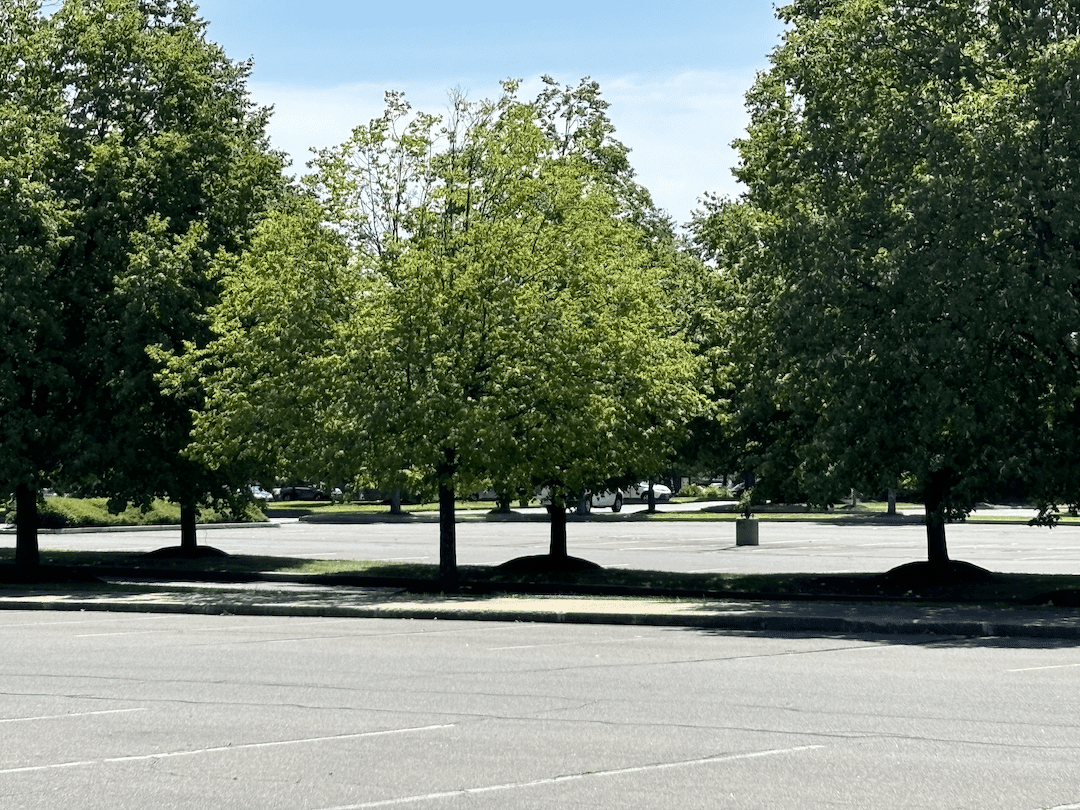
We-Ha.com welcomes Letters to the Editor from the public, including endorsements. Letters submitted by political candidates will be considered for publication up to 14 days prior to an election and most will be published within 48 hours of receipt. Letters that contain personal attacks or include profanity of any type will not be published. Rebuttals to letters should be submitted as a separate document, and commenting on letters will no longer be permitted. Please provide your full name and town, as well as your phone number at the end of the letter. Phone numbers will not be published but are required in case verification is needed. Please submit letters to [email protected].
Dear We-Ha.com:
Have you seen mulch volcanos? They probably were invented by an owner or less informed landscaper with the thought that more mulch around a tree means fewer weeds. It might work for a while, but at the same time, the tree is slowly strangled to death. Just look at the photos enclosed to see what happens to very healthy trees once a mulch volcano is applied.
Trees need air at the point where they come out of the ground. That’s where the bark starts. Bark is dead tree skin that protects the tree. Bark needs to stay dry. Normal mulching, level with the surrounding soil is used not only to stop weeds but also to keep moisture in the soil. That means that a mulch volcano adds moisture around the bark, right where it needs to stay dry. The result is wet bark that invites mold, fungus, and insects that thrive on dead, wet wood.
When mulch gets wet, after a year it clumps together, dries out, and will not do its job of retaining moisture. The poor solution is to add more mulch on top of the volcano the following year. The tree responds by sending out new roots into the higher mulch. Problem solved? No! Some of those roots wrap around the trunk looking for as much moisture they can get and strangle the tree. Then rot, fungus and insects continue higher up the tree. As the insects now have more wet bark to eat, and mold and fungus are happy, the bark starts to disappear and split and leaves the tree unprotected.
This is a vicious cycle until, after 5, 10, 15 years, depending on the size of the tree, it simply dies right at the point where it exits the ground.
When I saw four maple trees knocked over on a property in West Hartford, I asked the owner if they knew why. They thought that the wind blew them over. I mentioned the mulch volcano and that all four trees died at the same spot, with obvious rot and fungus within the first two feet where it comes out of the ground. There are many other trees on the property with the same volcanos in various stages of dying, losing their leaves, have no leaves, or are just stalks of bare trunks. It is not a disease, because there are also similar trees on the property, without mulch volcanos, that are very healthy.
Please, please, don’t think that mulch volcanos look good and stop weeds. You are just telling your tree that you don’t care and want it to die right at the time when it starts to look its best.
Raymond Giolitto
West Hartford
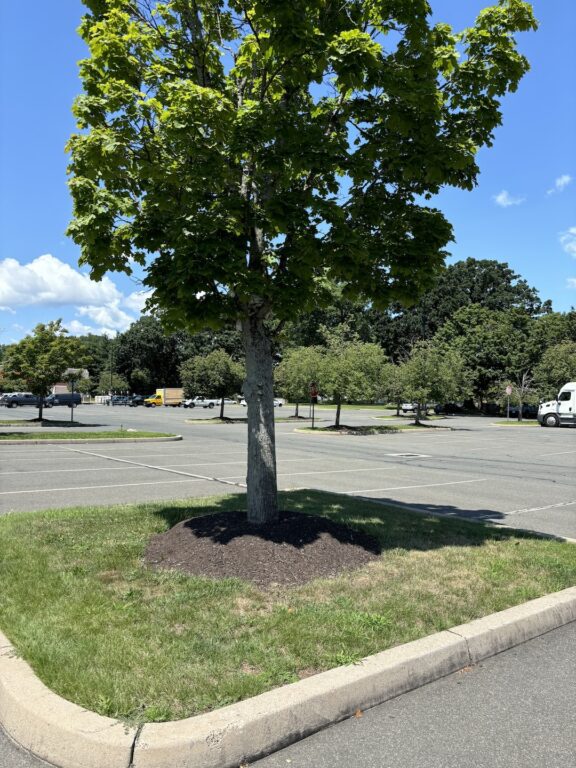
Photo credit: Raymond Giolitto
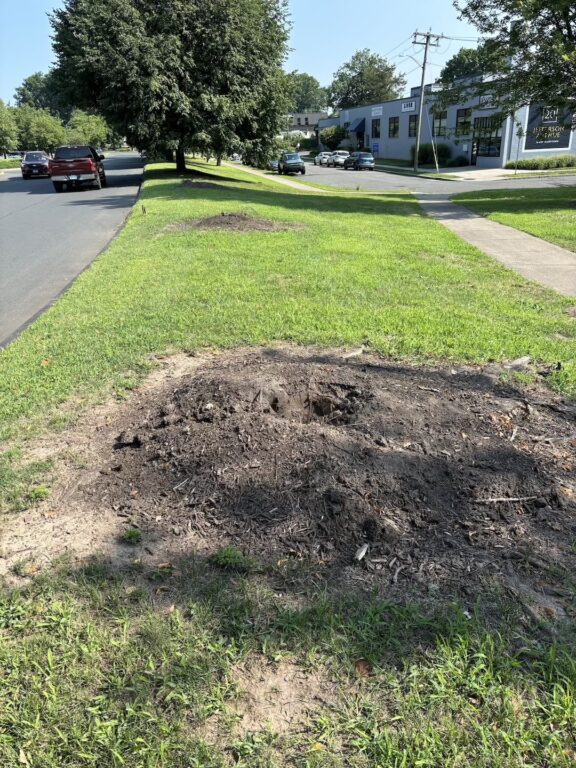
Photo credit: Raymond Giolitto
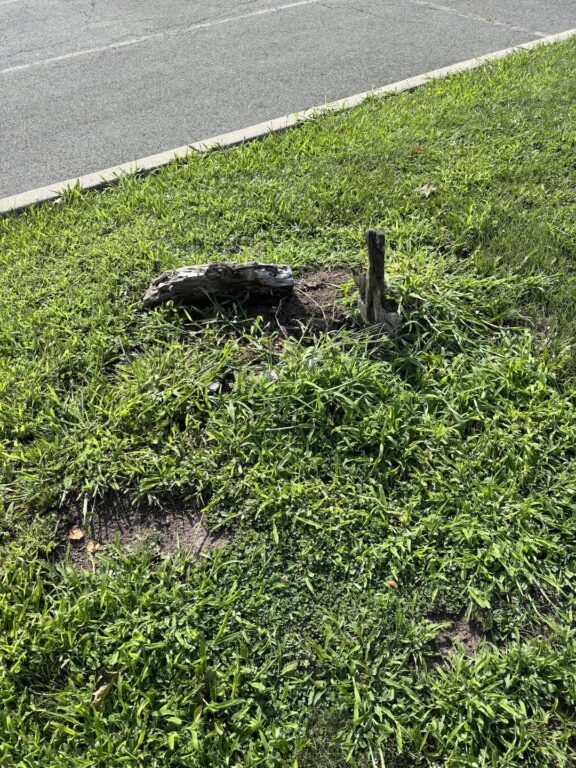
Photo credit: Raymond Giolitto
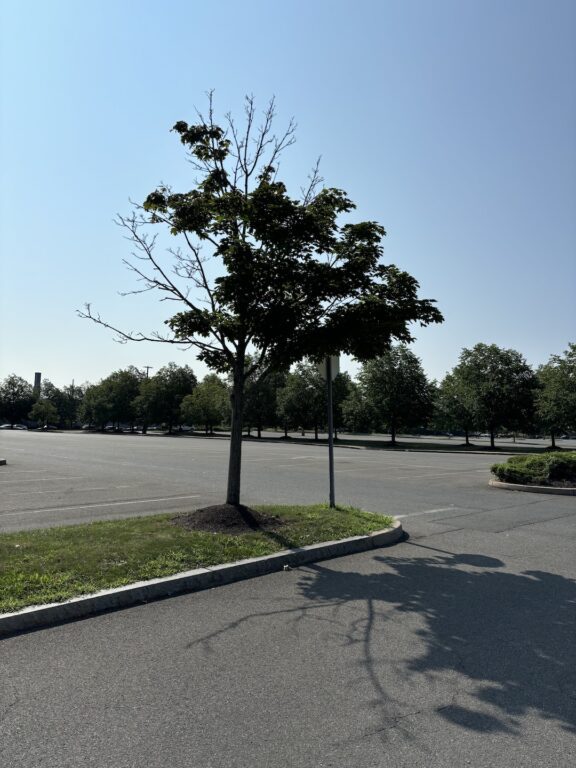
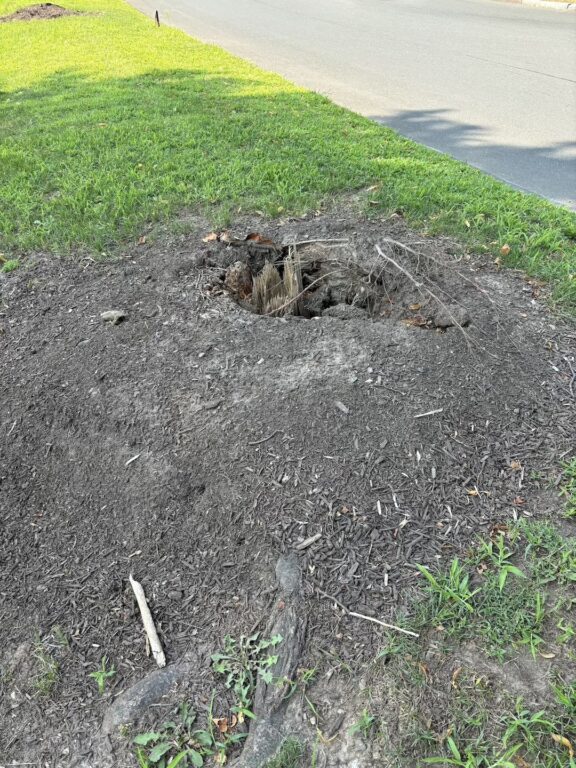
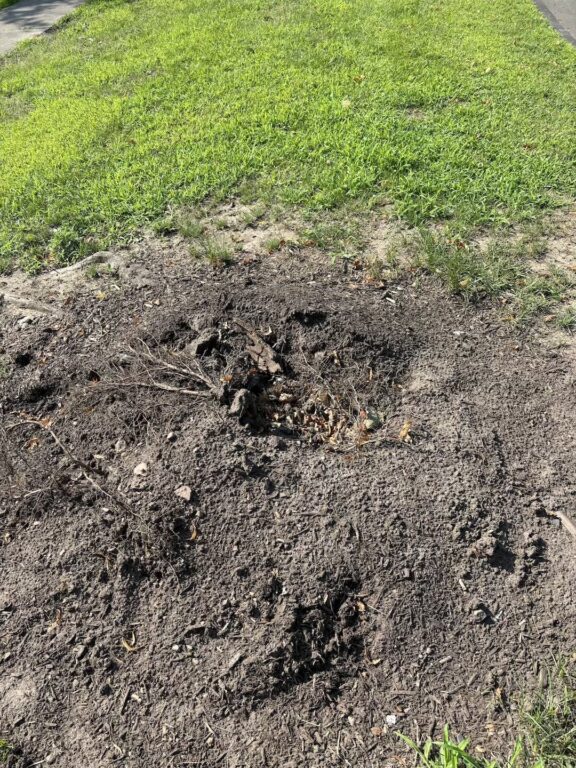
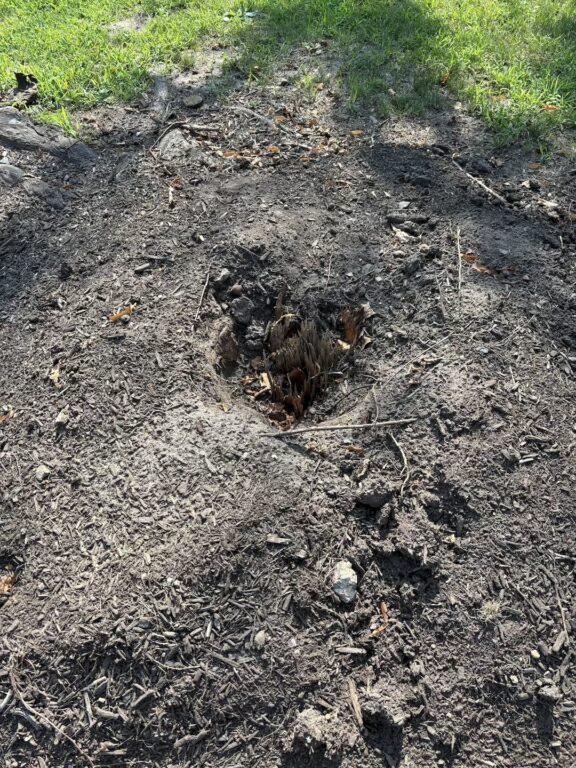
Photo credit: Raymond Giolitto




Raymond. Thank you for writing this letter. I 100% agree with you and so do the arborists that I have consulted about this very same issue. It’s ridiculous how many of these mulch volcanoes there are around town. Not just at the Home Depot but almost everywhere you look. Landscapers need to be informed that they are damaging the trees by doing this. I inquired at the Home Depot to see if they were aware of the issue and was told that it is an independent landscaper who “takes care” of that entire complex there. I even inquired with the Town to see if someone could contact the owner of the property and made only limited progress. The word needs to get out. If you can’t see the “root flare” of your tree then you have put too much mulch down. Don’t pile any mulch at all against the trunk! Ted Goerner, West Hartford Tree Project
No more volcano mulching, please!!!
The problem is that many “Landscapers” are just glorified lawnmowers with no education or knowledge about actual landscaping. I know how to mow my lawn and trim my bushes, but it doesn’t mean I’m a professional landscaper. But anyone can be a landscaper and many homeowners probably do a better job themselves then some “landscapers” out there. Look at the bushes that were planted in the American Eagle Credit Union lot New Britain Ave, across from Dunkin & Bombay Olive. The bushes were planted so close together that many have died over the past 5 or so years. The same goes for the new landscaping at Corbins Corner by Starbucks, Old Navy, etc plaza. In the tree islands at the end of the parking lanes you have huge tall grass plants or solid bushes which block the line of site as you are trying to take a turn. Just 2 examples, although a ton more of a “Landscaper” who really is just a glorified lawn mower with no real education, experience or foresight in planting bushes. But thank you for spreading the word and helping to educate us regular homeowners as well.